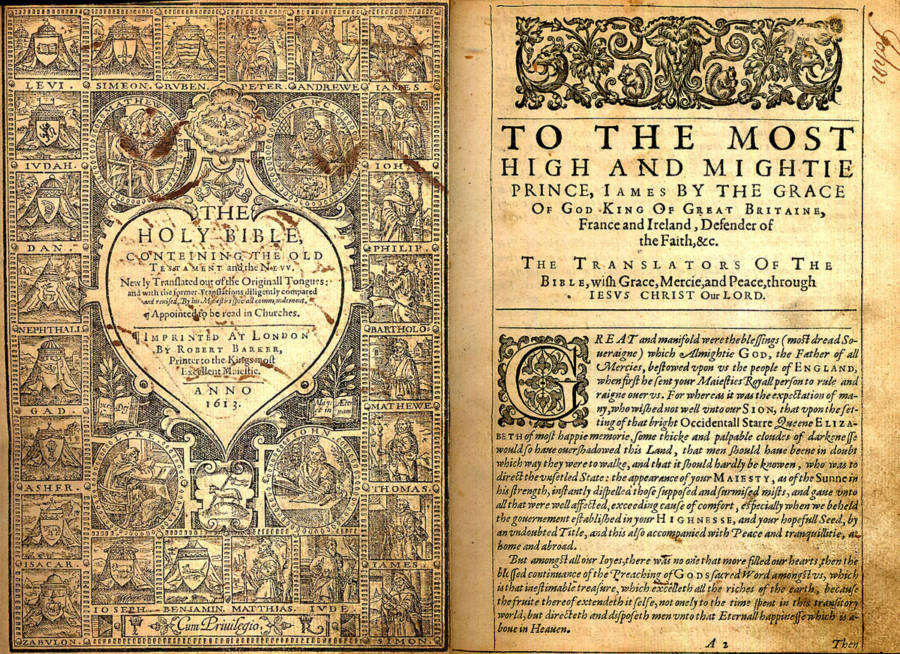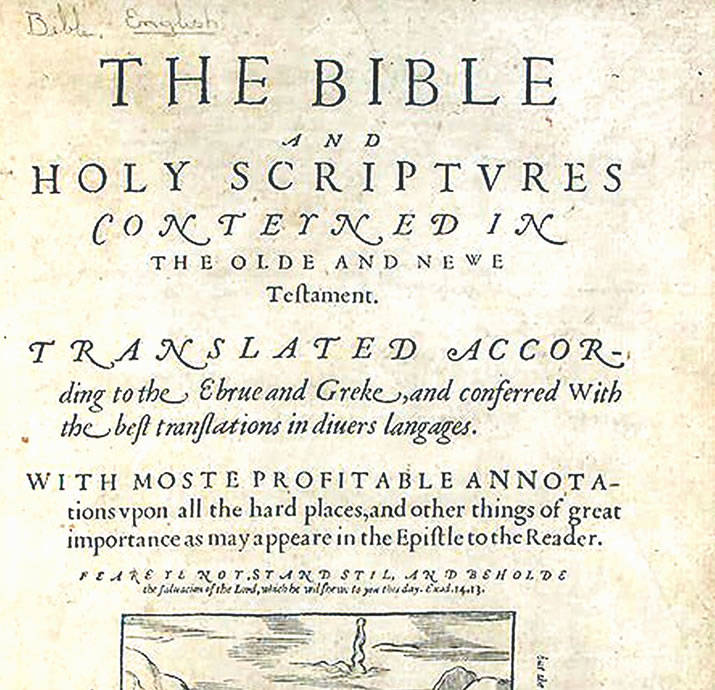Though the world now knows the Christian Messiah as Jesus, his real name in the original Hebrew was Yeshoshua or Yeshua, meaning “salvation.”

Wikimedia CommonsOver many centuries, Jesus’ real name evolved from the Hebrew Yeshua to the Greek Iesous to the Latin Iesus and finally to the form we know today.
While millions around the world believe that Jesus of Nazareth is the Son of God, he was also a man who once walked the deserts of Judea in the first century C.E. And when he was actually alive, he was called by a different name than the one we all know today. In fact, Jesus’ real name is likely completely unfamiliar to many of his followers to this day.
The name Jesus is merely an English adaptation of a German transliteration of a Latin transliteration of a Greek transliteration of an originally Hebrew name: Yeshua. And the history of how Jesus’ real name evolved into the form that the world knows today is complex, nuanced, and somewhat shrouded in mystery.
What Was Jesus’ Real Name?

Wikimedia CommonsThe Greek transliteration of Jesus’ real name, “Iēsous”, and the late Biblical Hebrew version “Yeshua.”
As is the case with what Jesus looked like or even how tall he was, many of the basic facts about the historical Jesus, the flesh-and-blood man himself, have remained murky and little-known over the centuries. This is certainly true of Jesus’ real name in its original form.
For starters, Jesus and his followers were all Jewish and so they had Hebrew names — although they would likely have spoken Aramaic. The “J” sound used to pronounce Jesus’ name in English does not exist in Hebrew or Aramaic, which is strong evidence that Jesus was called something different by his contemporaries.
Most scholars, therefore, believe that Jesus’ real name was actually “Yeshua,” a fairly common Jewish name around the time Jesus was alive. Archaeologists have actually found the name carved into 71 burial caves in Israel, dating from the time the historical Jesus of Nazareth would have been alive. This leads to the question of why, if there were evidently so many men named “Yeshua” running around at the time, the name “Jesus” was used for the Messiah.
How “Yeshua,” The Real Name Of Jesus, Became Lost In Translation

Wikimedia CommonsThe King James bible used the “I” spelling in place of the “J” spelling.
Because not every language shares the same sounds, people have historically adopted their names so as to be able to pronounce them in various languages. Even in modern languages, there are differences in the pronunciation of Jesus. In English, the name is pronounced with a hard “J,” while in Spanish, even though the spelling is the same, the name is pronounced with what would be an “H” in English.
It is precisely this type of transliteration that has caused “Yeshua” to evolve into the modern “Jesus.” The New Testament was originally written in Greek, which not only uses an entirely different alphabet than Hebrew but also lacks the “sh” sound found in “Yeshua.”
The New Testament authors decided to use the Greek “s” sound in place of the “sh” in Yeshua and then added a final “s” to the end of the name to make it masculine in the language. When, in turn, the Bible was translated into Latin from the original Greek, the translators rendered Jesus’ name as “Iesus.”

Wikimedia CommonsGerman crucifix depicting the “King of the Jews” sign in Hebrew, Greek, and Latin.
In John 19:20, the disciple writes that the Romans nailed to Jesus’ cross a sign stating “The King of the Jews” and that “it was written in Hebrew, and Greek, and Latin.” This inscription has been a standard part of depictions of Jesus’ crucifixion at Golgotha in Western Christianity for centuries as “INRI,” an abbreviation for the Latin Iesus Nazarenus Rex Iudaeorum, or “Jesus the Nazarene King of the Jews.”
Since Latin was the preferred language of the Catholic Church, the Latin version of “Yeshua” was the name for Christ throughout Europe. Even the 1611 publication of the King James Bible used the “Iesus” spelling. From there, Jesus’ real name only evolved further.

Wikimedia CommonsIn his own time, Jesus was known by the Hebrew name Yeshua, spelled “Joshua” in English — but the history of Jesus’ real name doesn’t end there.
The Evolution Of “Yeshua” Into “Jesus”
It’s hard to pinpoint exactly where the “Jesus” spelling came from, although some historians speculate that version of the name originated in Switzerland.
In Swiss German, the “J” is pronounced more like an English “Y”, or the Latin “Ie” as in “Iesus”. When the Catholic Queen, “Bloody” Mary I took the Engish throne in 1553, droves of English Protestant scholars fled, and many ultimately found refuge in Geneva. It was there that a team of some of the brightest English minds of the day produced the Geneva Bible that used the “Jesus” Swiss spelling.

Wikimedia CommonsThe Geneva Bible helped to bring about the popularization of the “Jesus” spelling.
The Geneva Bible was an enormously popular translation and was the version of the Bible quoted by Shakespeare and Milton. Eventually, it was brought over to the New World on the Mayflower. By 1769, most English translations of the Bible were using the “Jesus” spelling popularized by the Geneva Bible. And though this was far from Jesus’ real name in its original form and bore little resemblance to “Yeshua,” this version became accepted around the world as the standard that remains to this day.
Thus, the name used by English speakers today is an English adaptation of a German transliteration of a Latin transliteration of a Greek transliteration of an originally Hebrew name.